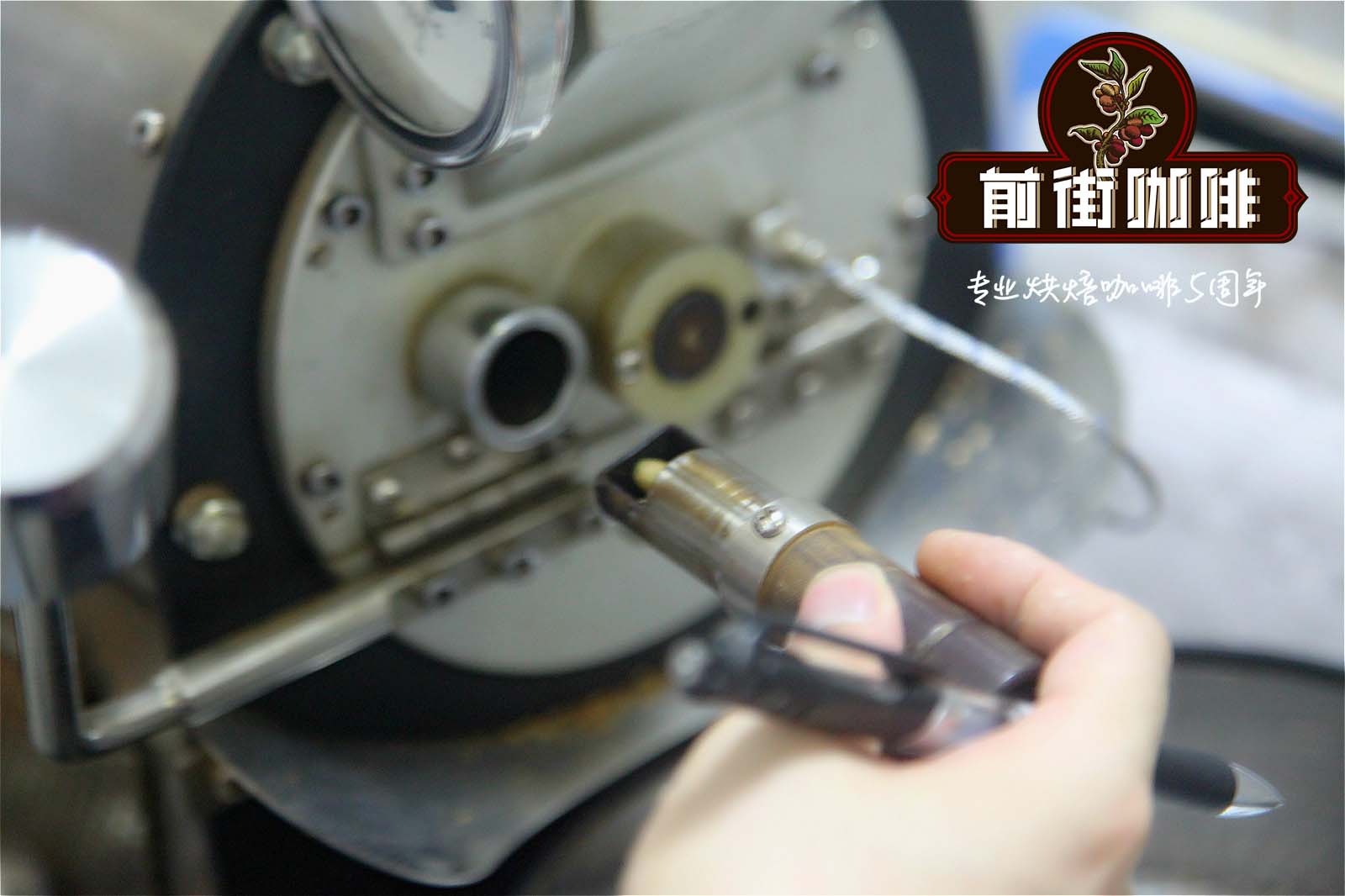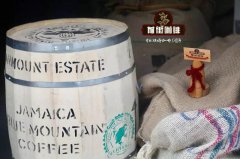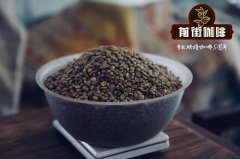Vietnam grows robusta coffee beans and Arabica, general situation of Vietnamese coffee industry

Professional coffee knowledge exchange more coffee bean information please follow the coffee workshop (Wechat official account cafe_style)
Vietnamese beans are really a partial choice. Absolutely avoid Vietnam's "sun-treated / dried" Robota beans, they are knocked down from trees on a large scale, rather than selectively picked, the treatment process is also very rough, raw beans often ferment spoilage. These sun-dried beans are often used to make instant coffee. If your father must drink Vietnamese beans, you can try Vietnamese Arabica beans billed as "boutique", or "washed / wet treated" robusta beans.
Vietnam mainly grows Robusta. When it comes to Vietnamese coffee, most people think of Robusta. Most of the people in circulation in the domestic market are Robusta, which has become synonymous with Vietnamese coffee. Therefore, I think that drinking Vietnam is a matter of taste, but as long as it is mixed beans, most of them will use Vietnam's Robusta, including big brands, but I just won't tell you. When many Chinese go to Vietnam, they think Vietnamese coffee is very delicious. A friend of mine said that the best coffee he drank in his lifetime was in Vietnam. When he took his first sip, he muttered to himself, "Grandma, why is the coffee here so delicious?" people who drink coffee for the first time think that Vietnam tastes good, and most of them are conquered by the aroma of Vietnamese coffee. On the other hand, half of the coffee beans used in the Vietnamese market are Vietnamese Arabica, half Arabica and Robusta, and very few of them only use Robusta. The production of Arabica in Vietnam is very small, accounting for only a small part of Vietnam's total output value. With the rise of the boutique coffee market in Asia, Arabica has been slowly expanding in recent years. The price of Arabica in Vietnam is twice as high as that of Robusta. The medium-and deep-baked Arabica in Vietnam has almost no sour taste and strong aroma. The newly baked beans have been raised for two days, and there is a feeling of being dizzy when grinding beans. Black coffee only shows aroma and bitterness, because the sour taste is weak, it is difficult to feel sweet. The wonderful taste of Arabica in Vietnam lies in its blending. For first-time coffee drinkers, most people like to mix coffee, and now they are grinding Arabica and a coffee companion. Their mouth is full of aroma, peanuts and butter cookies. It is precisely because there is no sour taste that they like it very much. And Vietnamese local practice, milk training, ice cubes plus dripping extraction of coffee, is also full of creamy, nutty and malt aroma, in short, is fragrant.
Vietnam Arabica is very fragrant, why it is so rare in China, on the one hand, because its price is twice as expensive as Luobu, on the other hand, it is because it loves to produce oil. The medium and deep baked Arabica in Vietnam begins to produce oil about 6 hours after baking. After 7 days, half of the 1 pound beans come out, and 15 days later, a bag of beans is opened. Each bean is covered with coffee oil and greasy again. In China, the barista will tell you that the oiled coffee beans are not fresh, and even the best beans are wasted. In addition, Vietnam is represented by Robusta. Drinking Vietnam and drinking instant solution is regarded as LOW by the fine goods industry. This is also the reason why Vietnam's Arabica cannot become mainstream. While the Vietnamese are not so hypocritical, I drink according to the oil, squatting on the side of the road while picking feet to drink, because it tastes good.
General situation of Coffee Industry in Vietnam
Since coffee trees were first introduced in 1857, coffee has been grown in Vietnam for 160 years. In recent years, the planting area of coffee in Vietnam has expanded rapidly, and the output has increased significantly, which has led to processing, sales and export, formed a complete industrial chain, and has become an important part of Vietnam's economy. In 2014, the national coffee planting area was about 653000 hectares, an increase of 2.7 percent over the same period last year, 30 times that of 1961. The period from 1986 to 2012 was a period of rapid growth of coffee production in Vietnam, which formed a strong competition with other countries in the field of Robsta coffee varieties in the world. Coffee production in 2013-14 was 30 million bags (60 kg each), or about 1.7 million tons, mainly robusta coffee. Over the past 10 years, Vietnam has exported 1.2 million to 1.5 million tons of coffee a year, with an export value of US $1.7 billion to US $3.6 billion, accounting for 15 percent of total agricultural exports. The specialization of the production of commercial coffee has created jobs for more than 560000 farmers, increased their income, and made great contributions to promoting the economic and social development of Xiyuan, southeastern and other growing areas, and for farmers to shake off poverty and become rich. The output value of coffee in Xiyuan province accounts for 30% of local GDP.
.
END
For more professional coffee exchanges, please scan the code and follow Wechat: qiannjie

Please indicate the source of the reprint.
Important Notice :
前街咖啡 FrontStreet Coffee has moved to new addredd:
FrontStreet Coffee Address: 315,Donghua East Road,GuangZhou
Tel:020 38364473
- Prev

Which is more expensive, Kopi Luwak or shit-like coffee? what's their flavor? What's the difference?
Professional coffee knowledge exchange more coffee bean information Please follow the coffee workshop (Wechat official account cafe_style) like the production of shit coffee and the principle of Kopi Luwak, as the name implies, it is made of coffee beans excreted from elephant droppings, how much is a cup of shit coffee? Let's take a look at the price of shit-like coffee. This coffee is called black ivory.
- Next

Will the Arabica beans in Vietnam taste good and sour? The main brands of Vietnamese coffee
Professional coffee knowledge exchange more coffee bean information please follow the coffee workshop (Wechat official account cafe_style) many places in Vietnam have climate and soil conditions suitable for coffee cultivation. But when it comes to producing the best Arabica beans in Vietnam, people think of the Great Lat. Since the beginning of the 19th century, the French have planted in the mountains of Darat City, Lindong Province, Vietnam.
Related
- How did the Salvadoran coffee industry develop in Central America?
- What exactly does the golden cup extraction of coffee mean?
- The Origin of Coffee flower
- [2023 Starbucks World Earth Day] there are more meaningful things besides free Starbucks coffee!
- What kind of coffee is there in Spain? 9 Flavors of Spanish Coffee
- Aromatic African coffee| Kenya's coffee culture and historical production area
- Liberica Coffee Bean knowledge: the characteristics of Liberian Coffee beans of the three original species of Coffee beans
- The origin and formula of Spanish latte introduces the taste characteristics of Bombon coffee in Valencia, Spain.
- How to adjust the solution of over-extracted coffee
- What is the tasting period of coffee beans? What is the period of coffee and beans? How should coffee wake up and raise beans?

